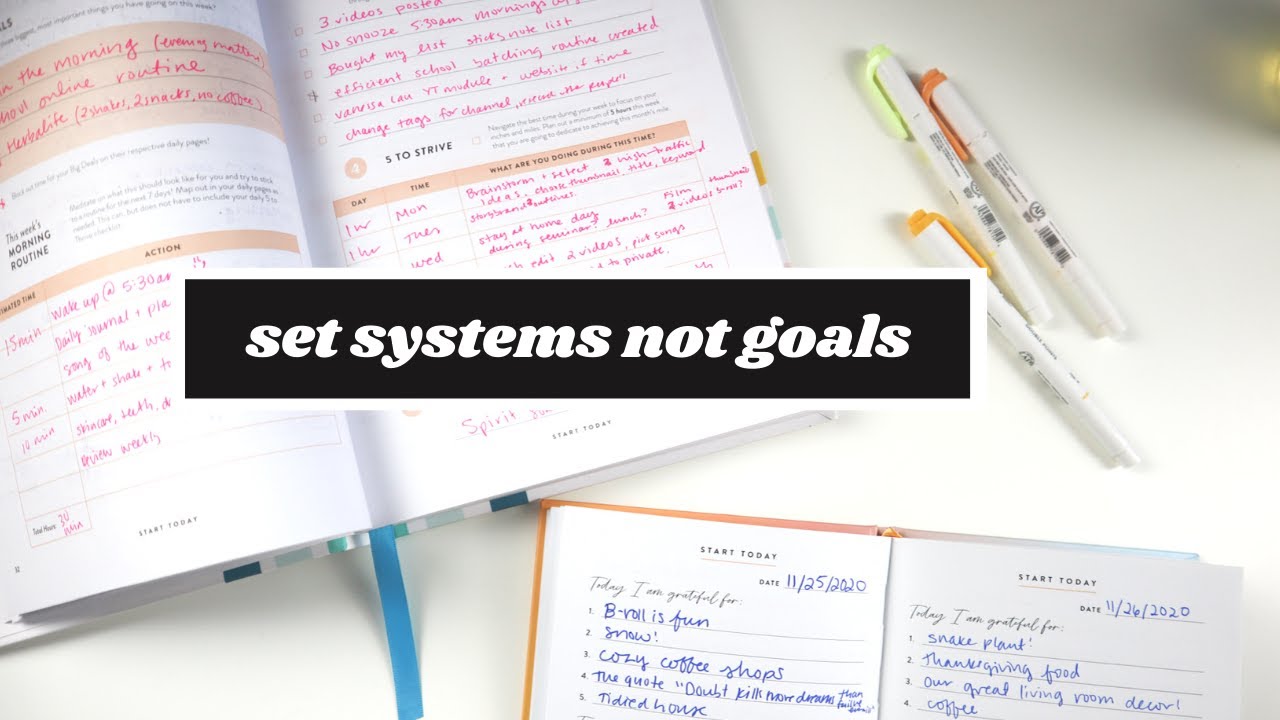Eu Criei Um Sistema De Produtividade
Summary
TLDRIn this video, the speaker introduces the APS productivity method, a system designed to align daily tasks with long-term life goals. Drawing from years of experience with various productivity systems, the speaker emphasizes the importance of clarity in life areas (personal, professional, spiritual) and the distinction between projects (short-term, focused efforts) and systems (long-term, sustainable habits). By integrating both, individuals can ensure they are not only productive but also living in harmony with their true desires, making steady progress toward meaningful objectives.
Takeaways
- 😀 Personal productivity is more than just task organization; it involves aligning tasks with your deeper life goals.
- 😀 The APS method integrates short-term projects and long-term systems to ensure consistent progress toward life goals.
- 😀 Stage 1: Clarify the key areas of your life (e.g., body, career, relationships) and define your vision for each area.
- 😀 Life goals should not be rigid SMART goals but flexible visions for what you want to achieve across different life dimensions.
- 😀 Use methodologies like Lifebook to segment your life into areas (e.g., body, career, finances) to gain clarity on what matters most.
- 😀 Stage 2: Short-term projects (e.g., running a marathon, learning a new skill) provide focus and energy but are not sustainable long-term.
- 😀 Short-term projects are effective for achieving specific, motivating goals but should eventually transition into longer-term systems.
- 😀 Stage 3: Long-term systems (e.g., daily routines, family time) are essential for ongoing success and require less effort once established.
- 😀 Systems are less exciting but crucial for long-term sustainability, as they keep you aligned with your goals over time.
- 😀 Regularly review and reflect on your goals to ensure that your activities are still aligned with your evolving desires and values.
- 😀 Balancing short-term projects and long-term systems creates a productive, fulfilling life, with progress happening in both immediate and enduring ways.
Q & A
What is the main problem the speaker addresses in their productivity journey?
-The main problem is that, while many existing productivity methods help with task organization, they often lack a connection to long-term goals, leaving a sense of disconnect between daily tasks and life ambitions.
What is the APS method, and why did the speaker create it?
-The APS method is a productivity system created by the speaker to address the disconnect between task management and long-term goals. The method helps align day-to-day activities with broader life objectives for better personal fulfillment and success.
What are the key areas of life the speaker focuses on in the APS method?
-The speaker uses 11 life dimensions: body, mind, emotional well-being, character, spirituality, social life, relationships, children, work, money, and quality of life.
Why is it important to have clarity about these life areas, according to the speaker?
-Having clarity about these life areas helps ensure that tasks and activities align with what a person truly wants in life, preventing them from being productive with tasks that don't contribute to their deeper goals.
What is the difference between productivity and busyness as discussed in the script?
-Productivity is about effectively completing tasks that contribute to one's goals in the shortest time possible, while busyness refers to being occupied with tasks that may not be aligned with meaningful objectives.
What is the purpose of short-term projects in the APS method?
-Short-term projects in the APS method are designed to bring focus and high energy toward specific, achievable goals with clear beginnings and endings, like running a marathon or learning a new skill.
Why are short-term projects not sustainable in the long term?
-While short-term projects can create immediate results and motivation, they lack the ongoing sustainability that systems offer. They are often intense and short-lived, and they don't maintain long-term impact without continual effort.
How do long-term systems complement short-term projects in the APS method?
-Long-term systems are ongoing efforts that create consistent improvements in life over time. These systems are less exciting than short-term projects but are essential for maintaining progress in areas like health, relationships, and work habits.
What are some examples of long-term systems the speaker follows?
-Examples include reading habits, maintaining quality relationships, and setting aside regular time for family. These systems are not exciting but ensure long-term stability and progress.
What role does the speaker's daily routine play in their productivity system?
-The speaker’s daily routine is crucial for maintaining alignment between their activities and long-term goals. They regularly review their objectives and adjust their routines to ensure they are on track with their life ambitions.
Outlines

Cette section est réservée aux utilisateurs payants. Améliorez votre compte pour accéder à cette section.
Améliorer maintenantMindmap

Cette section est réservée aux utilisateurs payants. Améliorez votre compte pour accéder à cette section.
Améliorer maintenantKeywords

Cette section est réservée aux utilisateurs payants. Améliorez votre compte pour accéder à cette section.
Améliorer maintenantHighlights

Cette section est réservée aux utilisateurs payants. Améliorez votre compte pour accéder à cette section.
Améliorer maintenantTranscripts

Cette section est réservée aux utilisateurs payants. Améliorez votre compte pour accéder à cette section.
Améliorer maintenantVoir Plus de Vidéos Connexes

The notebook that saved my husband from infinite scrolling

【2024年版】初心者向け Notion タスク管理術を紹介します

HOW TO SET SYSTEMS INSTEAD OF GOALS | a system that will change your life

The Fastest Way To Rewire Your Brain For Maximum Achievement

Mais Produtividade, Menos Stress (Explicado com Lego)

How to manage your time LIKE BATMAN (This one skill will change your life)
5.0 / 5 (0 votes)
